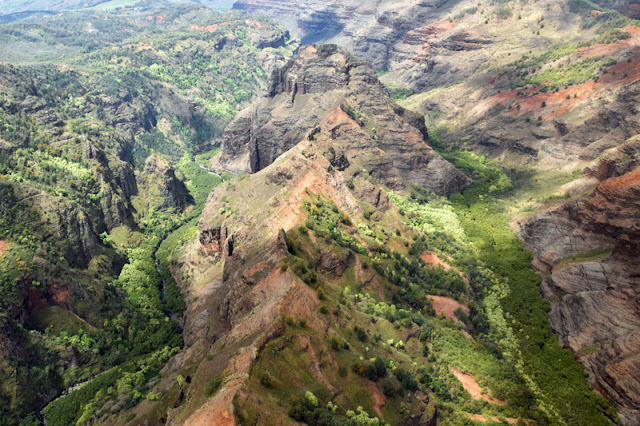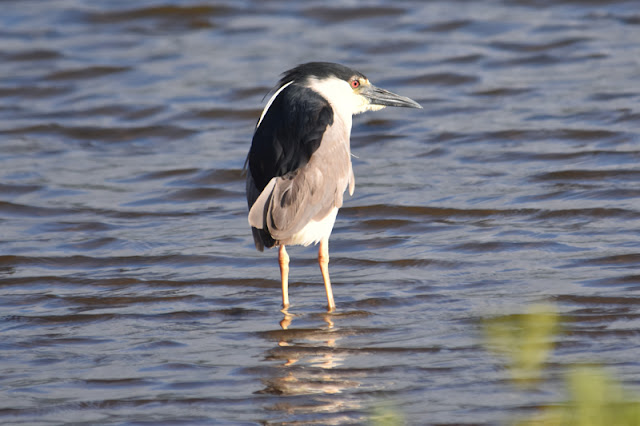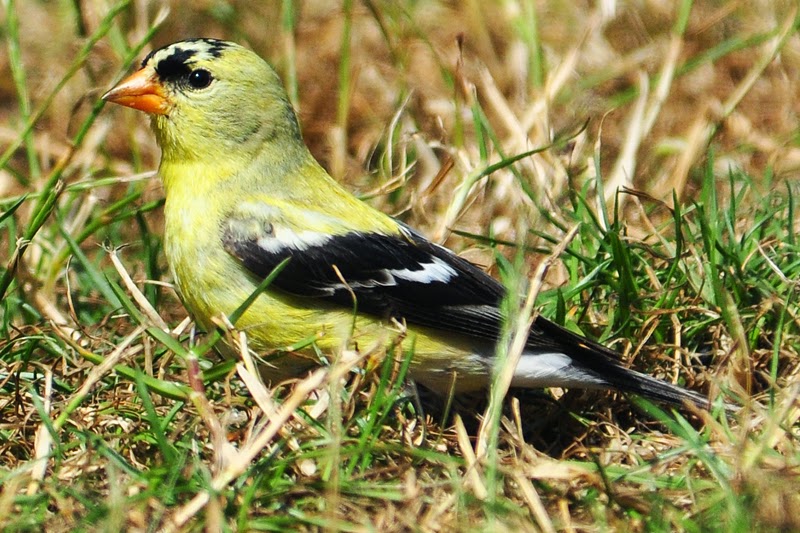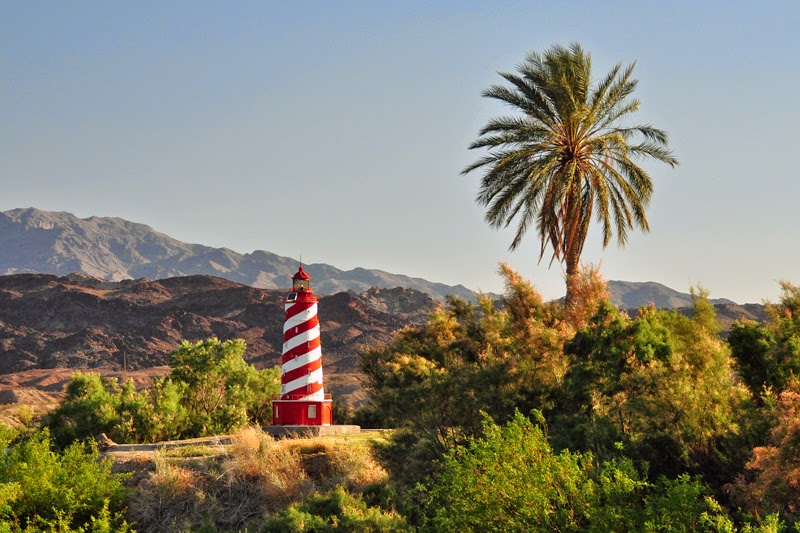In March, after spending 2 months in the Houston
area, we went to our daughter’s home in McKinney, TX (north of Dallas). While there we took our long anticipated
first trip to Hawaii. Instead of taking
the traditional Hawaiian vacation trip (going to the beach), we went on our
usual exploring type trip. We packed
light (no checked baggage) and took off on a 20 day visit to 6 of the Hawaiian islands. We stayed in B&Bs (instead of resort
hotels), only went on 2 tours, did not take swim suits, and rented a car on
each island (except 1) to drive around and see as much of each island as
possible. Of course we sought out
lighthouses and managed to photo all 8 of the major lighthouses plus 12 of what
are called minor lights. In addition we
visited all 7 National Park sites (including Pearl Harbor) scattered around the
islands plus visited some National Wildlife Refuges.
First, a few notes about Hawaii. There are 8 ‘main’ islands plus many small
ones, atolls, etc. You can only visit 6 of
the islands: Oahu, Kauai, Maui, Lanai, Molokai, and Hawaii (referred to as ‘The
Big Island’). One of the other 2 islands
is very private and no one lives on the other small one. The only way to get between the islands is by
plane (except there is a people only ferry between Maui and Lanai). Each island was formed by volcanoes coming
from the bottom of the ocean. When each
volcano goes dormant, that island gradually erodes away over millions of years
and sinks back into the ocean. Islands
have been formed from the north to the south (Kauai is the oldest and
northernmost) and The Big Island is the southernmost (the newest and has the
only active volcano). There is another
island forming by the volcano Loihi underneath the ocean to the south of The Big
Island. The prevailing winds are from
the northeast, so the eastern side of each island gets lots of rain (well over
100 inches per year in many places), then the tall volcano (mountain) blocks
the rain and the western side of each island is typically very dry (maybe just
10 to 20 inches per year).
After landing in Honolulu on our flight from Dallas,
we drove around the island of Oahu seeing 4 great lighthouses and visiting
Pearl Harbor (Arizona Memorial). This
island is where most of the people live and driving in Honolulu can be very
difficult to say the least with an Interstate Highway (between what 2 states
you might ask?), traffic jams, and multiple military installations that one can
easily end up driving into and then having to turn around (we did this 3
times). The Waikiki Beach area is way over
touristy. Overall, this was our least
favorite island.
While on Oahu we took a round trip day flight tour
to Kalaupapa National Historic Site on the island of Molokai. Kalaupapa is on a beautiful peninsula that is
at the bottom of huge sea cliffs and is isolated from the rest of the island. Leprosy
was such a feared disease, that everyone that contracted it was quarantined
here in the 1800’s where they were not given the best care. Then in 1873 Father Damien (and later Mother
Marriane in 1888) came to provide the much needed care that they needed. Note: Both Father Damien and Mother Marriane
have subsequently been declared saints for their work here. Leprosy still exists, can only be contracted
by those with certain genes, and can be cured by the antibiotics dapsone,
rifampicin, and clofazimine. Some of the
former patients and families still live here.
The only way to visit here is to sign up for a tour and either fly in or
hike or ride mules down the sea cliffs (of course, we took the easy way and
flew in). This very memorable tour was
‘on Hawaiian time’ and everything was at a very slow pace (they even advised us
to take a book to read while we waited for the old school bus to arrive etc.).
After leaving Oahu, we flew onto the beautiful
island of Kauai which is referred to as the garden island. After driving to Waimea Canyon (referred to
the Grand Canyon of the Pacific), visiting the beautiful Kilauea Point lighthouse
and National Wildlife Refuge, and seeing the north shore area, we thoroughly
enjoyed a fantastic flight over the island on a Blue Hawaiian helicopter with a
native born pilot giving a great narration.
Since over 70% of the island is inaccessible, this is the only way to
really see what a beautiful place this is.
We flew over Waimea Canyon, the northern Pali cliffs/coastline, and flew
into the caldera of Mount Wai’ale’ale which gets over 450 inches of rain a year. We can’t think of anyplace else that is as
lush and green as this place is. This definitely
was the highlight of our trip.
Then it was on to the island of Maui (which to a lot
of people is the best island to go to since it is not as crowded as Oahu and there
are so many things to do here). In
addition to our seeking out lighthouses, we got up very early one morning (to
beat the crowds) and drove the Hana Highway (southeastern coast of Maui). This drive lived up to its billing for the
numerous curves, narrow one lane bridges, very lush green growth, and many
waterfalls. After reaching Hana, we
continued on and stopped at the gravesite of Charles Lindbergh. On another day, in mid-morning we drove from
sea level up to the top of Haleakala at over 10,000 feet in Haleakala National
Park. We just couldn’t get ourselves up
at 3:30 in the morning to drive up and see sunrise at the top (which is
supposedly one of the things ‘you must do’).
It was still very beautiful in late morning and we saw the unusual
silver sword plant that only grows here.
While on Maui, we did succumb to one of the ‘must do’ Hawaiian activities
and enjoyed a luau in Lahaina.
While on Maui, we took a day trip from Lahaina on
the west coast to the island of Lanai via ferry. This island used to be a large pineapple
plantation, but there is very little there today and the island is pretty
desolate. There are only 2 resorts (currently
being remodeled) plus the small community of Lanai City in the center (population
of the island is 3,200). There are very
few paved roads so we rented a Jeep and drove to see Shipwreck Beach and The
Garden of the Gods. This is one of those
places where we can say that we enjoyed our visit, glad that we came, but we
see no reason for us to ever go back.
Then it was on to The Big Island (all of the other
islands could easily fit into this one).
We flew into the Hilo airport on the east coast, rented a car, then
immediately took the Saddle Road (between the 2 mountains) to the west coast
where we stayed for 3 days visiting 3 National Park sites and driving thru
cattle ranching country on the northern part of the island. We then drove to the southernmost point in
the US (of course there is a lighthouse there) and on to the community of
Volcano where we stayed for 3 days. This
is very close to the Hawaii Volcanoes National Park. While in the park, we drove thru multiple
lava flows, saw petroglyphs, and walked thru a lava tube. We were extremely fortunate to be there when
the lava lake raised up high enough to where we could see it from the viewing
area (usually all you can see is a steam cloud in the daytime and a glow at
night). This is the first time that this
has happened since 2008.
Finally, it was time to return to Hilo for our
return flight to Oahu and then our flight back to Texas. We feel very fortunate to have been able to
see so much of the islands and to experience how unique each one is. And it was a great way to finally reach our
goal of visiting all 50 states in the USA.
Hope all of you are doing well.
Sea turtle on Turtle Beach (north shore of Oahu)
Makapu'u lighthouse on Oahu (this is the largest Fresnel lens on the US - 2 sizes larger than any other)
Kalaupapa lighthouse on Molokai
Kilauea lighthouse on Kauai
Rooster on Kauai - Wild chickens with chicks and roosters can be see (and heard) around the islands
Waimea Canyon on Kauai (photo taken from helicopter)
View along Pali coastline on Kauai (photo taken from helicopter)
Egret flying over Wailua Falls on Kauai
Garden of the Gods on Lanai
Black sand beach on Hana Highway in Maui
Top of Haleakala on Maui
Black-crowned night heron on Maui
Pacific golden plover on Maui
Kailua minor light on the Big Island
Yellow-billed cardinal on the Big Island
Kilauea volcano lava splattering on the Big Island
Sea arch on the Big Island - where lava flowed into ocean & wave action created the arch
Tree covered drive on the Big Island south shoreline drive





















.JPG)











































